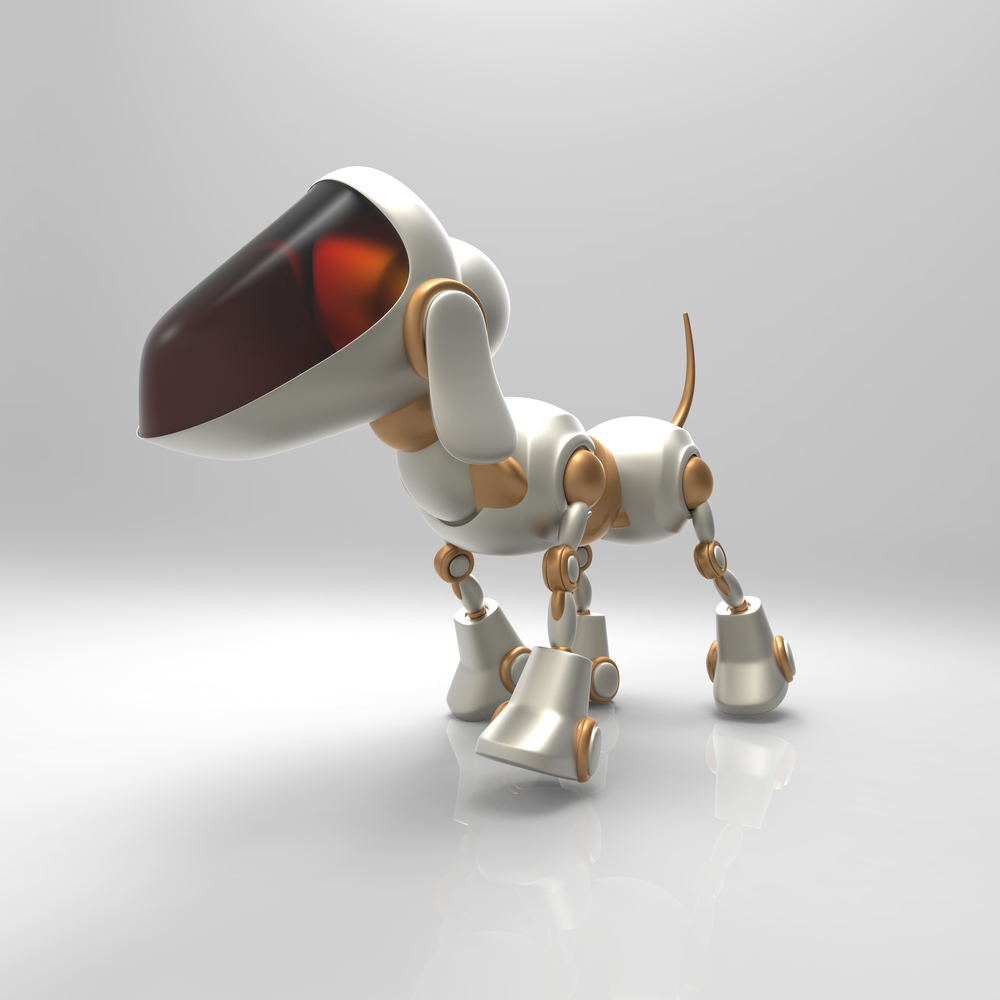

 Back
Back
New (And Improved?) Companions: The Rise of Pets 2.0
The world is currently experiencing an unprecedented pace of advancement, with technology rapidly changing every aspect of our lives, including how we interact with our pets. While the traditional relationship between humans and their animal companions remains intact, a new player has emerged in the court of caresses – the “Robo-Pets” or robotic pets.

Writer Roi Kadosh

A cold metal robot versus a warm lump of fur
It’s been almost a decade since the first pet robots hit the market, but they didn’t exactly set the world on fire. Can we really expect machines to replace the emotional bond we have with our pets? Today’s robo-pets are still a far cry from their flesh-and-blood counterparts. They lack the warm, fuzzy fur, sweet scents, and wet kisses that make our pets so special. Even worse, their artificial touch and companionship leave a lot to be desired. It’s obvious to anyone who has experienced the real thing that these robotic substitutes simply can’t compete with the organic connection and emotional support that our pets provide us.
Let’s briefly compare the features of robotic pets and real pets to understand this better. First, let’s talk about the emotional side. The emotional connection to a real pet is strong, natural, and complex, whereas with a robotic pet, it’s artificial, fixed, and clumsy. Natural pets provide us with a more tangible, warm, scented, and slimy touch, while with robotic pets, we have to settle for a cold, artificial, limited, and more mechanical interaction. When it comes to adaptability, natural pets are more diverse and adaptable to their environment, whereas robotic pets have a more rigid adaptability. The gap between the two is particularly significant when it comes to feelings. Natural pets have a high and accurate ability to perceive and analyze emotions, while this ability is absent in robotic pets.
In today’s world, robotic pets may seem like an easy alternative to real pets since they require less maintenance. However, they lack the emotional connection that makes pets so special to us. Robotic pets cannot adapt to changing circumstances or express individual preferences like natural pets can. Furthermore, they lack the ability to sense and respond to complex emotions, which is a fundamental aspect of the human-pet relationship. Real pets provide a high level of emotional support and comfort that simply cannot be replicated artificially. Therefore, the emotional connection between humans and their pets remains the main reason why pets are still irreplaceable companions.

So what’s next?
All of these observations hold true for the present time. However, what can we expect in the next 30 or 50 years? To explore this question, we constructed a hypothetical timeline for the development and adoption of robotic pets, based on current research and predictions in the fields of robotics, materials engineering, and artificial intelligence. Although the timeline is speculative, there are certain milestones that are likely to be achieved in the near future. Of course, there is always the possibility that things will turn out differently than expected, but it is worth considering the potential advances in technology that may occur.
In 2015, the first robotic pet was introduced to the market, resembling a dog. Although it was expensive, the product was perceived by many as bulky and merely a novelty item.
2020 marked a significant development in the availability of robotic pets, though they still offer only limited interaction. While the first models are not yet sophisticated enough to approach the basic features of real pets, they provide a basic starting point for technologists to continue developing and improving upon in the future.
2030 – Significant strides in artificial intelligence will result in the emergence of interactive robotic pets that offer a broader range of emotion-like behaviors and states, with greater adaptability and responsiveness to changing circumstances.

2035 – Robotic pets will achieve greater realism and organic-like movements through advancements in biomechanics and robotics. They will have greater joint flexibility, mimicking natural pets more closely, and allowing for more physical interactions with humans.
2040 – Further advances in sensory technology will enable robotic pets to sense and respond to their environment with increased accuracy. They will have the ability to recognize and respond to specific people, environments, and stimuli, creating a more personalized experience for their owners.
2045 – Advancements in emotion recognition technology and neural mirroring will enable robotic pets to exhibit a wide range of emotional responses, including the ability to sense and react to the emotional states of their human owners. As robotic pets become more adept at mimicking the behavior and emotions of real pets, they will become increasingly popular among those who are unable to care for live animals due to allergies or living in small spaces.
2050 – The replacement of live pets with robotic pets will begin to occur gradually as the technology continues to evolve and integrate various features. With robotic pets becoming increasingly sophisticated, they will be able to replicate the experience of raising a real pet fully, marking the beginning of a transition from live animals as companions to robotic ones.
2055 – The popularity of robotic pets will continue to surge, with a growing number of individuals opting for the ease of care and affordability of a mechanical companion over the obligations and expenses of a living pet.
2060 – Breakthroughs in neuroprosthetics and brain-computer interfaces will allow direct connection between a person’s brain and the sensors and actuators of robotic pets, creating an immersive and interactive experience with the robot that surpasses what real pets can offer.
2070 – As the technology of robotic pets continues to advance, with the ability to interface directly with the human brain, many people will opt for them as their primary form of companionship. With the ability to customize their robotic pets to their every need and desire, and the convenience and low maintenance of these pets, they will become the preferred choice of many, leading to a significant reduction in the population of live animals kept as pets.
At first glance, it may seem like bleak news for us, the pet-loving people of this era. It’s difficult for us, who enjoy the comfort of touching, petting, and cuddling our furry friends, to imagine finding companionship, emotional support, and physical closeness in a tail-wagging robot. It’s hard to fathom that machines could ever replace the unique bond between humans and animals. The idea of a world without this connection can be frightening and disheartening. But perhaps this is just a form of conservatism stemming from narrow-mindedness or even biological chauvinism. We no longer long for the tails our ancestors once had when they roamed the trees of primitive times. Why then, should we cling to the idea that our future robotic pets won’t be able to provide us with the same level of emotional support and physical closeness as our beloved pets? These replacements will be so realistic, soft, sensitive, and intimately close to us that they will easily surpass the faded memories of their flesh-and-blood predecessors.
While we live in an exciting era of robotic pets. Regardless of the future, we will continue to prioritize the well-being of animals and their owners, and the special bond between them, whether they are organic or synthetic.
As our world progresses, we must embrace change and seek novel ways to enhance our lives as we venture into uncharted territory.





We offer the most comprehensive coverage
out there
Having Animalia is like a top-of-the-line
Rolls-Royce with a swimming
pool in the trunk.



Get your pet insurance quote
Is your pet a...
- Dog
- Cat
What is your pet's name?
Zip code




